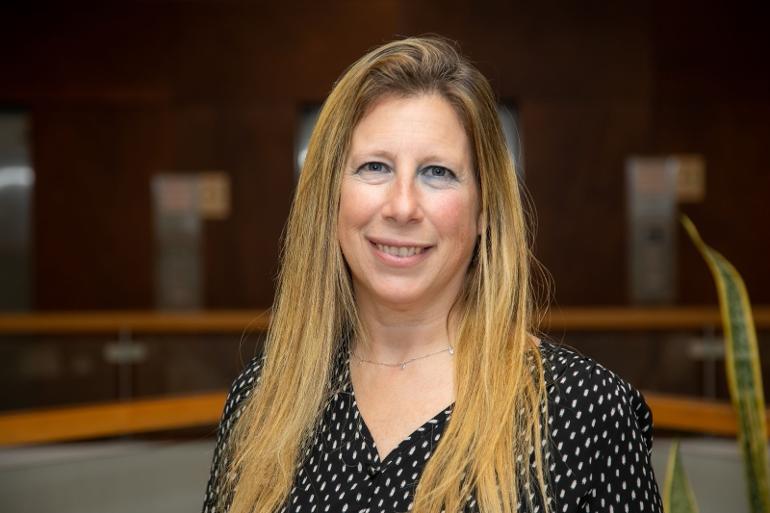Prof. Orit Karnieli-Miller of Tel Aviv University (courtesy of Tel Aviv University)
Research is first to empirically map clowns’ skills, authors say, claiming it will help doctors understand their work and better integrate it into treatment
By NATHAN JEFFAY
Israeli researchers have documented the method behind the madness of hospital clowning, in the hope that it will enable doctors to better integrate its practitioners into their work.
In a peer-reviewed study, they identified and analyzed some 40 skills that medical clowns use and noted that many of them can be utilized by physicians to aid treatment. For example, it explored how clowns can increase a patient’s motivation to adhere to a treatment plan.
“Doctors often think of clowns as just there to ‘cheer up’ patients but it’s about much more than that, and there is a real need for research outlining to medical professionals exactly what medical clowns do,” Prof. Orit Karnieli-Miller, lead author of the study, told The Times of Israel.
“There are plenty of studies showing clowns help patients deal with pain, but no studies until now empirically mapped the skills they use and their therapeutic approach. We’re helping physicians to understand the ‘secret magic’ of medical clowning.”
Israel is a leader in medical clowning, and the Dream Doctors nonprofit provides clowns in several hospitals.
Karnieli-Miller, from Tel Aviv University’s Medical Education department, organized medical simulations with Dream Doctors’ clowns and performed in-depth analysis of videos. She also interviewed clowns.
“Doctors meet clowns but rarely get to explore in depth what they do, and sometimes find them a disturbance,” she said. “Here, we provide that insight. We lay out clearly, for example, how they build a relationship with patients and connect with their needs, their emotions, and much more.”
The study explored how clowns can assist in some of the tensest moment in the hospital, namely when there is conflict between patients and staff. It said that clowns help patients to express themselves, and were seen “as mediators who bridge between the two ‘opposing’ sides” — sometimes physically standing between them to restore calm.
Karnieli-Miller and her colleagues portrayed medical clowns, with their penchant for organized chaos and disorder, as the antithesis of the normal hospital ethos. They wrote: “If health professionals know how and when to collaborate with medical clowns to help patients overcome challenges, they may be more tolerant of medical clowns’ ‘disruption’ of hospital order.
“This will provide medical clowns with the time and space to connect with patients, to help patients feel cared for and seen, to encourage them to become active participants in their treatment plan, and to increase their motivation and ability for adherence. This may in turn enhance patient-centered care and improve patients’ well-being.”
